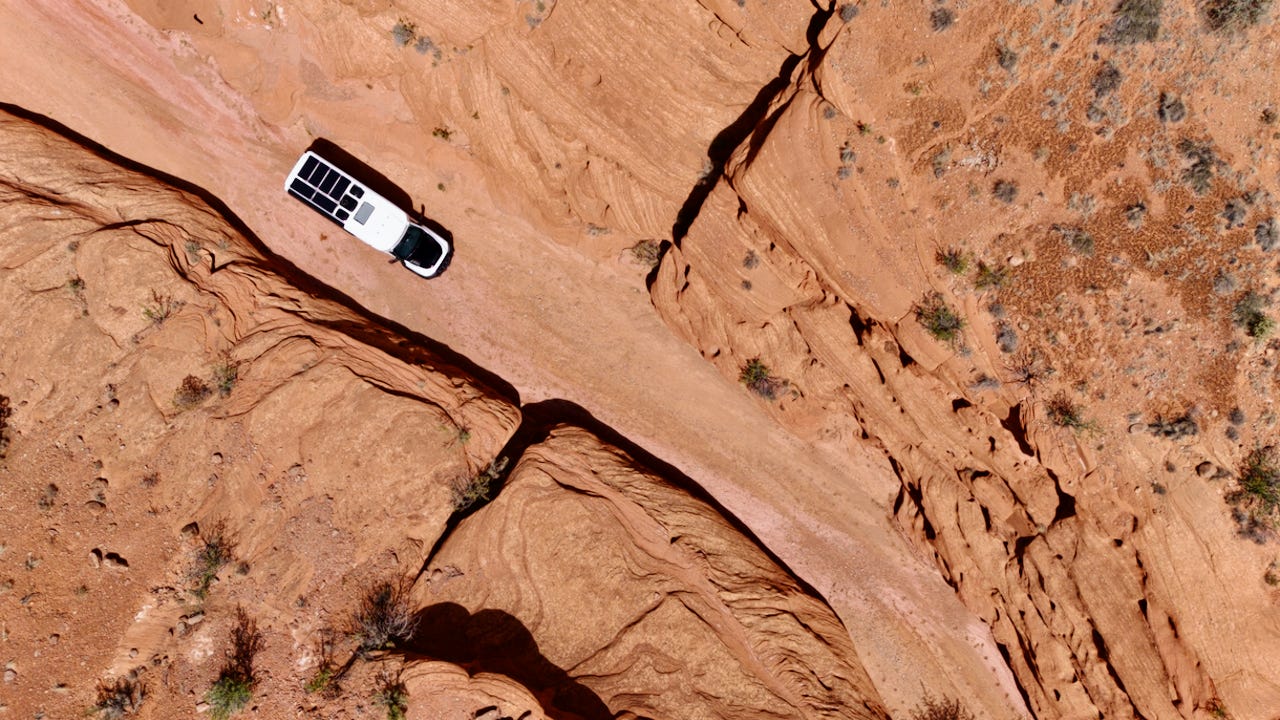Always Be Scouting (ABS)
Manifesto 8.0 The West, and sometimes the South, and occasionally the Arctic, is always playing in my head like a rough cut with no locked picture.
Early in my film career, I was a production assistant. Not the glamorous kind. Think gaff tape, charging walkies, twenty-hour days, getting yelled at for getting the wrong salad dressing and a coffee order memorized down to the milk. But I kept my eyes open. I got sent on director scouts, those curated last looks after the location team had narrowed things down. I wasn’t there to contribute creatively. I was just supposed to drive, listen, nod.
However, I always brought a camera. And I shot.
Producers started dropping my stills into pre-pro decks. Directors liked them more than the scout files. The shots felt cinematic. I was photographing the location as a possibility, not as documentation. Framing the dream.
That’s when I developed my ethos: Always Be Scouting.
ABS.
Even now, years later, I’m still doing it. Every two-lane road, every old cattle gate, every granite outcrop, I file it away. Could be a future shoot. Could be a solo overnight. Could be a place to show my son the stars. That’s the thing about scouting: it's not just for work. It’s for life. For the long game.
And here’s the code:
I won’t tell you where it is, but I’ll show you.
I learned that one the hard way. A magazine publisher once asked where I shot a photo I’d posted on a Land Rover forum. I gave a vague answer. A few months later, that exact composition, down to the same placement of the truck on the climb, showed up as a full-page spread in their magazine. No credit, no mention. Just copy and paste.
Since then, I keep locations close to the chest.
As the industry started cutting corners, the locations got smaller. Backlots instead of open ranges. Soundstages instead of landscapes. Jeep once asked me to shoot on a virtual stage—the same kind used on The Mandalorian. This after years of filming on the Rubicon. They wanted to recreate mud and trail dust using pixels and LEDs.
I passed.
Because locations matter.
Because story lives in the landscape.
Because real light can't be rendered.

So when Camp Yoshi asked me to help find a spot in Utah that would carry the weight of their mission, Black joy, Black presence in wild spaces, I knew exactly where to go, like it was my own story. Because it was. We found a canyon that hadn’t been posted all over Instagram. One you had to commit to. It became a basecamp for belonging.
I was brought onto 127 Hours to shoot the one-sheet, the movie poster. That was it. A contained deliverable.
But then Christian Colson, the producer, saw some of my landscape work, frames I’d captured on previous trips through Utah canyon country, and realized I knew this terrain like a second language. The bends in the washes, the angle of late light on Entrada sandstone, the difference between shade and shadow at altitude. He pivoted.
Next thing I knew, I was embedded in the desert, tasked with capturing all the time-lapse footage for the film. Sunrises, sunsets, stars crawling across the black ceiling of the canyon. I wasn’t just shooting the desert—I was living in it. Sleeping in the back of a truck, waking before first light, waiting through blue hour, golden hour, every transition in between.
You start to memorize how the day moves. You stop waiting for perfect conditions and start recognizing them in real time. There’s a moment—about 6:17 a.m. in mid-spring—when the first light hits the lip of a canyon wall and ignites the sandstone in fire-orange for nine sharp minutes. Miss it and you’re staring at a wall. Catch it and it becomes something holy.
That kind of intimacy with the land doesn’t fade. It calcifies into muscle memory. Into instinct.
It’s why, years later, when Toyota came calling and clients wanted the impossible, remote, cinematic, real. I knew exactly where to look. And just as importantly, where not to.
When Toyota called about a campaign on the Dalton Highway, I didn’t flinch. I’d driven it before, ice-crusted gravel, truckers on the radio, 400 miles of nowhere that punishes the unprepared and rewards the persistent.
Originally, their creative brief called for the Inuvik–Tuktoyaktuk Highway, back when it wasn’t paved and the only way across was waiting for the Mackenzie River to freeze solid. Romantic? Sure. Real? Absolutely. But I knew, from experience, it wouldn’t open in time for the Tacoma TRD Pro’s spring release. The calendar didn’t care about creative.
Because I’d already run the Dalton more than once, and had shot in that brutal corridor of wind and light, we didn’t need a formal scout. I knew the pullouts, the permafrost cracks, the way the light goes blue at 2pm and stays that way for hours. I knew how to thread the needle between reality and myth.
So we pivoted. The Dalton gave us everything we needed—still remote, still cinematic, still northern enough to feel like the edge of the world.
I don’t just show up to shoot. I consult. I help shape the narrative through terrain. That’s the thing: you don’t get to meaningful work without meaningful landscapes. The best campaigns I’ve done started long before the cameras rolled—out there, boots down, notebook in the glove box, watching how the light changes on a canyon wall at 5:14 AM.
Driving the West in my mind is automatic now. But it’s not just the West. It’s anywhere the land speaks louder than the client brief.
So yeah—Always Be Scouting.
For the shot. For the story. For something bigger than the product that will be obsolete next season.
And no, I’m still not telling you where it is.








ABS - can’t shut it off